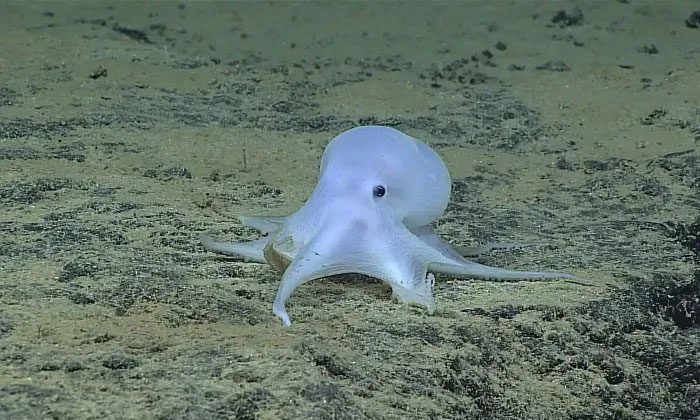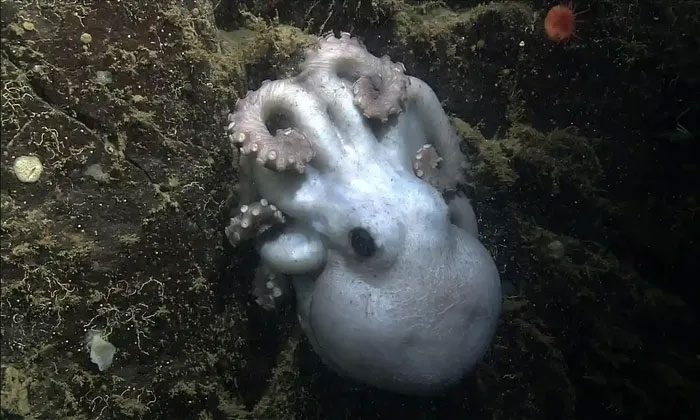In 2016, this organism was first discovered in the waters off Hawaii at a depth of 4 kilometers below the sea. At that time, scientists confirmed it was almost certainly a new species. The Casper octopus is named after a ghost character from an animated film.
The Casper octopus is bright white, has no fins, and features short, thick tentacles. This is the only cephalopod species captured on camera by a deep-sea robot at such depths.

The Casper octopus has short, perplexing tentacles. (Photo: NOAA Office of Ocean Exploration and Research).
Previously, the only cephalopod discovered at similar depths was the Dumbo octopus, named after another animated character. It was found at a depth of about 7 kilometers, featuring a strange head shape and two fins protruding from its head like elephant ears, according to the Guardian.
Encountering Casper was an unforgettable moment for Janet Voight, the invertebrate curator at the Field Museum of Natural History in Chicago, USA. “This is completely new and unusual,” she said.
Casper presents many mysteries. For example, why is its color so pale, while most octopuses are considered the best camouflagers on the ocean floor due to their ability to change body color to match their surroundings?
Even deep-sea octopuses can display vibrant colors, like the purple Graneledone. Some species have dark skin pigments to hide from glowing prey. Voight speculates that Casper’s pale coloration may be due to a lack of pigments in its food.
Another mystery is that Casper’s tentacles are all short, although it is not due to limited reach. “If the octopus lived in shallower and more tropical environments, its tentacles would be longer and thinner.”
According to Janet Voight, this developmental trend lacks a clear explanation. She explains that instead of stretching out to capture food, the Casper octopus employs an alternative strategy of rotating its body so that its mouth, located on the underside, directly contacts the food.
Scientists are learning more about Casper by collecting footage from the deep Pacific Ocean over five years. Through this, they discovered dozens of Casper-like octopuses on the ocean floor, originating from two distinct species.
“They might be quite common,” Voight said. “This is just a sign that we know very little about what is down there.”

The Casper octopus laying eggs on a sponge. (Photo: Monterey Bay Aquarium Research Institute).
For her, what is particularly interesting is that Casper uses its tentacles to wrap around eggs stuck to sponges (soft-bodied marine organisms). They seem to lay their eggs on sponges rather than on rocks.
- Currently, this pale and mysterious Casper octopus has not been officially named, as everything we know about it is based on images. No one has collected specimens for detailed study.
- Thousands of spider crabs unusually wash up on a beach in England
- Steel-footed sea snail species at risk of extinction
- Giant wolf fish wipes out all lobsters in American fishermen’s nets


















































